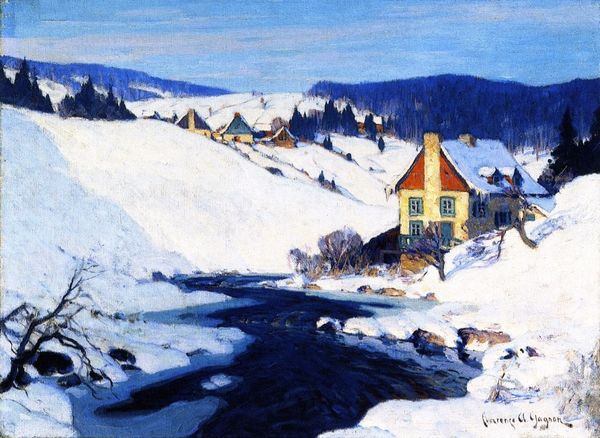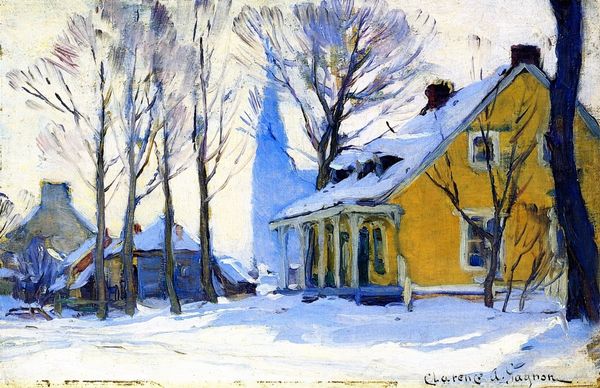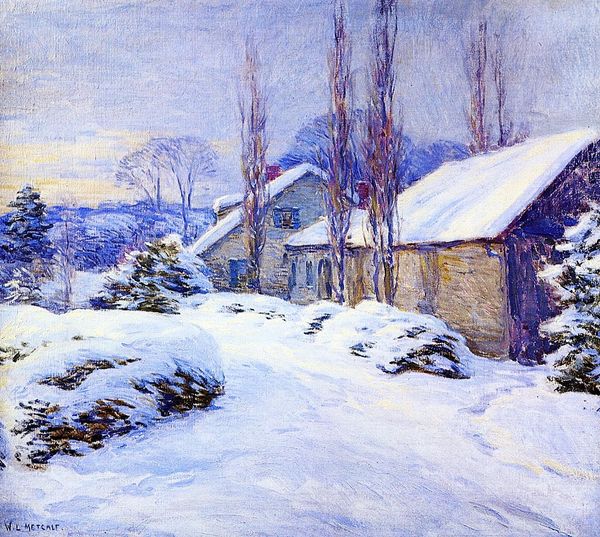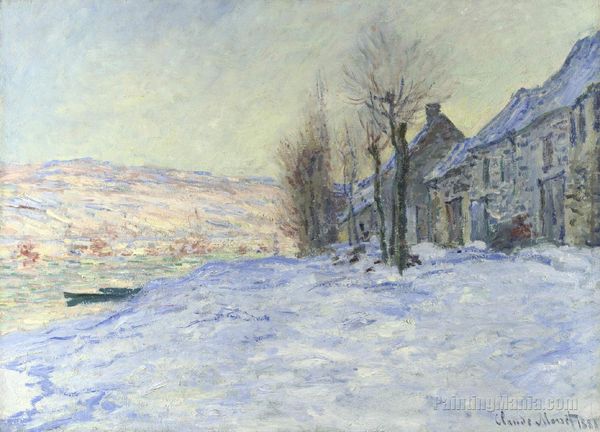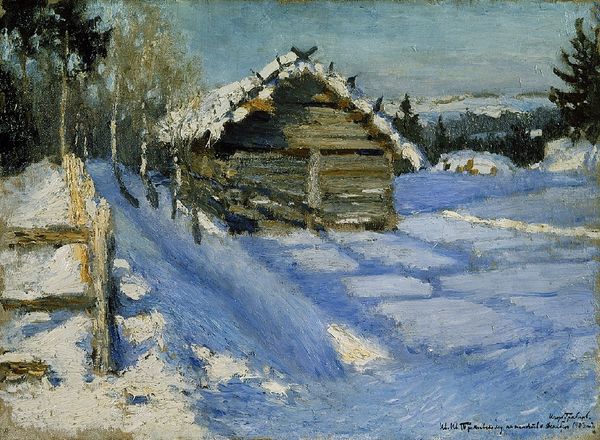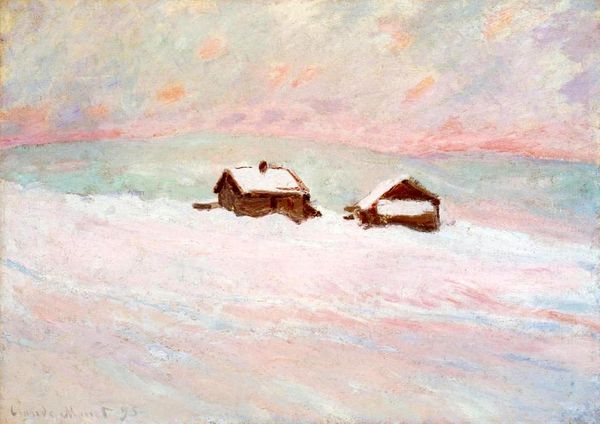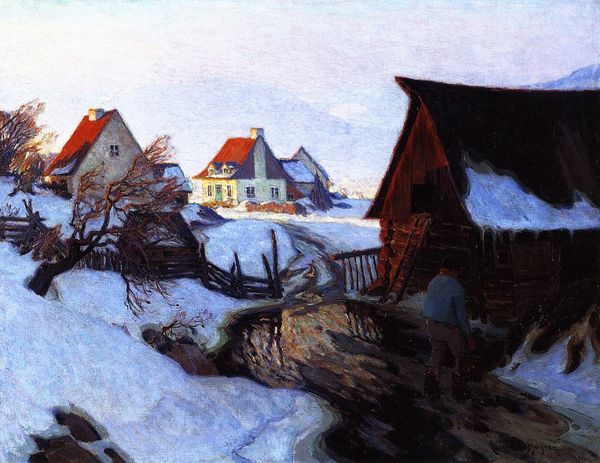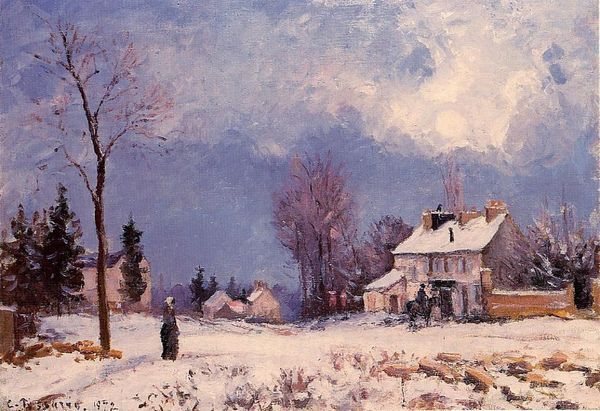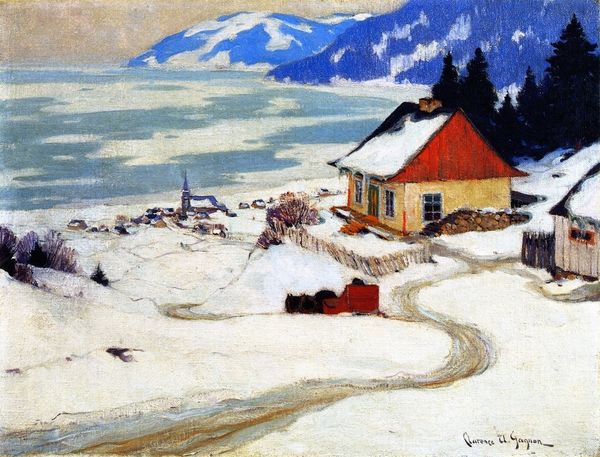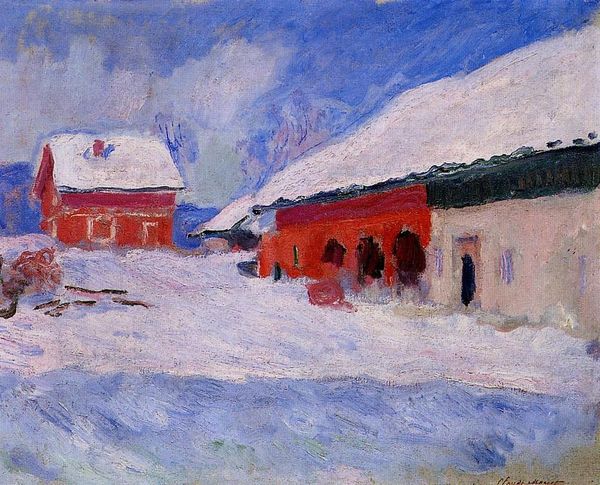
Copyright: Public domain
Editor: We’re looking at Clarence Gagnon's "A Farm, Last Rays" from 1913, painted with oil. It’s a lovely winter scene, mostly blues and whites, with a cozy farm nestled in the snow. It feels peaceful, almost melancholic. What do you see in this piece? Curator: What strikes me is how Gagnon uses a seemingly idyllic scene to perhaps subtly critique the encroachment of modernity on rural life. Consider the date: 1913. Industrialization was rapidly transforming societies, often at the expense of traditional ways of life. Editor: That’s interesting, I didn't consider that. Is the painting suggesting the end of something? Curator: Precisely. The "last rays" in the title could be interpreted as the final moments of this kind of isolated, agrarian existence. The thick application of paint, typical of Impressionism, also adds texture, emphasizing the harshness of the winter landscape and maybe the difficult lives of those who inhabited it. Notice also how the village is depicted further in the distance... do you think the visual layering represents social stratification? Editor: Perhaps, I see your point about how it could critique social norms of the period. It's made me think about land ownership too; about who gets to own land and who benefits from it. Curator: Exactly. Considering Gagnon’s Canadian context, it opens discussions about colonization and its impact on indigenous populations. It encourages us to ask who *isn't* represented in this picturesque scene. Editor: I hadn't thought about it that way. Seeing it through that lens gives it a totally different dimension. Thanks! Curator: Indeed. Art invites dialogue, not just about what's visible, but also what's deliberately, or perhaps unconsciously, omitted.
Comments
No comments
Be the first to comment and join the conversation on the ultimate creative platform.
